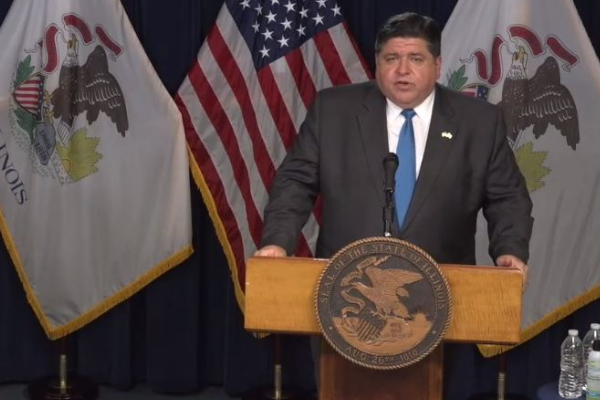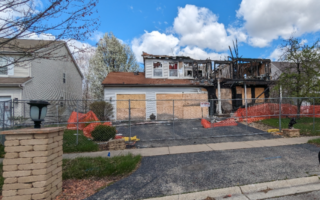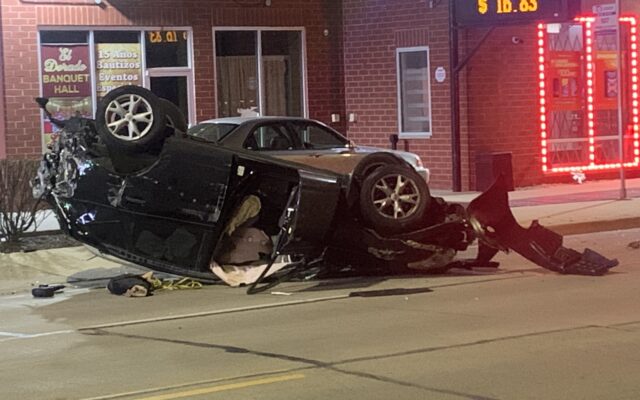State Public Health Officials Announce COVID-19 Resurgence Mitigations to Take Effect in Regions 7 and 8 on October 23

All 11 Regions of the Restore Illinois Plan Seeing Increased Positivity Rates; Administration Continues to Work Aggressively to Support Small Businesses
Governor Pritzker and the Illinois Department of Public Health (IDPH) are announcing COVID-19 resurgence mitigations will be implemented in Region 7 (Will and Kankakee counties) and Region 8 (Kane and DuPage counties), beginning at 12:01 a.m. on Friday, October 23, 2020. Both regions are seeing a 7-day rolling average test positivity rate of 8 percent or above for three consecutive days, which exceeds the threshold set for establishing mitigation measures under the state’s Restore Illinois Resurgence Plan.
The administration continues to distribute emergency relief for small businesses and communities impacted by the ongoing pandemic. In Regions 7 and 8, approximately $14 million has already been awarded for small businesses and community aid. Businesses in both regions, as well as other regions currently under additional mitigations, will receive priority consideration for the current round of Business Interruption Grants (BIG), with $220 million available to help offset costs and losses businesses have incurred as a result of the pandemic.
“By the end of this week, four regions will all be operating under the standard resurgence mitigations – that includes no indoor dining or indoor bar service and limiting in-person gatherings to no more than 25 individuals,” said Governor JB Pritzker. “As colder weather approaches and flu season is upon us, we’re going to see the rippling effects of these current unfortunate trends. The massive surge of cases in our neighboring states will continue to have a spillover effect. There is no easy fix for the effects of this virus on our economy and our public health. But we can and will manage through this. We’re Midwestern tough here in Illinois. We know how to deal with a crisis. And we know how to take care of each other.”
“We have seen regions move into mitigation measures, but also move back out,” said IDPH Director Dr. Ngozi Ezike. “Working together we can bring down the number of new cases and hospitalizations. Increases are being seen not only across Illinois, but across the country, and in many other countries around the world. Until there is a safe and effective vaccine and a significant proportion of the population has received it, we must all stay the course. What you do in your community affects those around you, so please, do your part and help slow the spread.”
“The actions we take today to slow the spread of this virus will define what happens in the coming days, weeks and months,” said Dr. Justin Macariola-Coad, Interim Chief Medical Officer at Advocate Sherman Hospital. “Wearing a mask, washing your hands, and keeping your distance from others will prevent the spread of this illness and save lives. The more we ignore taking these basic steps, the more people will get sick and the harder it will be on the health care system and our brave frontline clinical workers to keep up with the pandemic this winter and help care for our communities across the Northwest suburbs.”
Mitigation measures taking effect October 23 in Regions 7 and 8 include:
Bars
- No indoor service
- All outside bar service closes at 11:00 p.m.
- All bar patrons should be seated at tables outside
- No ordering, seating, or congregating at bar (bar stools should be removed)
- Tables should be 6 feet apart
- No standing or congregating indoors or outdoors while waiting for a table or exiting
- No dancing or standing indoors
- Reservations required for each party
- No seating of multiple parties at one table
Restaurants
- No indoor dining or bar service
- All outdoor dining closes at 11:00 p.m.
- Outside dining tables should be 6 feet apart
- No standing or congregating indoors or outdoors while waiting for a table or exiting
- Reservations required for each party
- No seating of multiple parties at one table
Meetings, Social Events, Gatherings
- Limit to lesser of 25 guests or 25 percent of overall room capacity
- No party buses
- Gaming and Casinos close at 11:00 p.m., are limited to 25 percent capacity, and follow mitigations for bars and restaurants, if applicable
These mitigations do not currently apply to schools.
Support for small businesses has been one of the central features of the Pritzker administration’s COVID-19 response. Since March, the administration has launched various small business and community relief programs – including over $1 billion in programs created by the Illinois Department of Commerce and Economic Opportunity (DCEO).
These programs include small business grants created as part of the historic $636 million BIG program. DCEO is now accepting applications for the second round of BIG, which makes funding available to hard hit communities and industry sectors, and which will prioritize applications from communities required to implement enhanced mitigations.
Additionally, DCEO is actively processing reimbursements for local governments impacted by COVID-19 via the state’s $250 million Local CURE program. Local CURE is covering governmental costs related to public health compliance, PPE, COVID testing and more. Counties and municipalities may also provide economic support payments to businesses interrupted by the COVID-19 public health emergency by applying for Local CURE’s Economic Support Payments Grant Program. For more information on these programs and for technical assistance in applying, please visit DCEO’s website.
In the coming days, IDPH will continue to track the positivity rate in Regions 7 and 8 to determine if mitigations can be relaxed, if additional mitigations are required, or if current mitigations should remain in place. If the positivity rate averages less than or equal to 6.5% for three consecutive days, then the regions will return to Phase 4 mitigations under the Restore Illinois Plan. If the positivity rate averages between 6.5% and 8%, the new mitigations will remain in place and unchanged. If the positivity rate averages greater than or equal to 8% after 14 days, more stringent mitigations can be applied to further reduce spread of the virus.
Yesterday, the administration announced COVID-19 resurgence mitigations will be implemented in Region 5, in Southern Illinois, beginning October 22. Region 1, in Northwestern Illinois, has been operating under tightened mitigations since October 3 and the region has continued to see test positivity climb at a consistent pace. Including Regions 7 and 8, four of the 11 public health regions have now triggered the state’s failsafe state-action metric.
This marks the second time that Region 7 has surpassed the threshold set for establishing additional resurgence mitigation measures. The state initially implemented additional mitigations in Region 7 on August 26. The region was able to return to Phase 4 of the Restore Illinois Plan on September 18, following weeks of close coordination between IDPH and local health departments, as well as a concerted effort by community leaders and residents. Now, in addition to a test positivity rate of above 8% for three consecutive days, Region 7 is also experiencing concerning ICU availability.
As part of the administration’s robust response to the pandemic, the state continues to strengthen its nation-leading testing operation. Illinois is now averaging over 65,000 tests per day, which is well above three times the testing than the average state. Testing is readily available throughout the state, as it remains a critical step to reduce the spread of the virus, given that a positive test result begins the contact tracing process to prevent further spread in Illinois’ communities.
In addition to testing, IDPH continues to actively monitor every region in the state for several key indicators to identify early, but significant increases of COVID-19 transmission, potentially signifying resurgence. Indictors include an increase in a region’s positivity rate with a simultaneous increase in either hospital admissions for COVID-like-illness or a decrease in hospital capacity, or three consecutive days of greater than or equal to 8% test positivity rate (7-day rolling average). These indicators can be used to determine whether additional community mitigation interventions are needed for a region to prevent the further spread.
A full list of mitigation measures pertaining to some businesses and industries may be found on the DCEO website here.






